Hey there, horse lovers and the curious alike!
Ever found yourself captivated by a horse’s flowing mane and tail?
You’re not alone! These luxurious tresses aren’t just horse fashion statements; they serve some really cool purposes too.
My friend used to shave her horse’s mane in the summer, and it got me thinking—why do horses have manes in the first place?
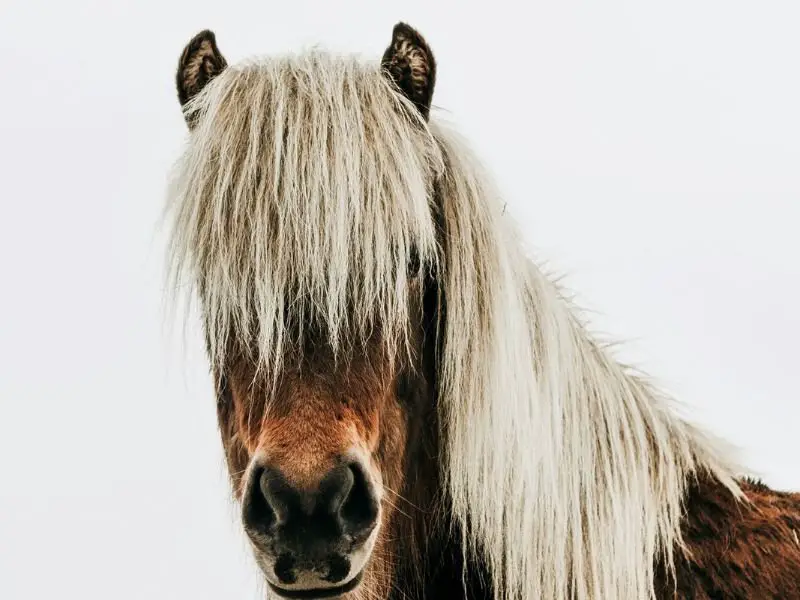
Why Horses Have Manes?
If you think a mane is all about making a style statement, you’re in for a surprise. These fabulous tresses do so much more: they protect horses from sunburn and pesky bugs, help control body temperature, and even give riders something to hold onto.
But wait, the mane game isn’t exclusive to horses. Yep, you heard it right! Zebras, giraffes, and antelopes also sport their own versions of manes. But let’s be honest, none quite match the splendor of a domestic horse’s mane.
So, what’s the real deal behind these flowing locks? Well, even experts are scratching their heads. There’s no one-size-fits-all answer, but there are a bunch of theories that we’re going to dive into.
Ready to unravel the mane mysteries and become a certified mane expert? Stick around, because we’re just getting started!
Mane as a Shield: Protection
Ever looked at a horse’s mane and thought, “Wow, that’s just a bunch of fancy hair?” Think again! That mane is like a knight’s armor, specifically designed to protect the neck—a hot spot for predator attacks. This hair ridge runs from the top of a horse’s head, known as the poll, all the way down to the withers, acting like a built-in shield.
Fun Fact: Horses weren’t born with luxurious manes. Nope! Over time, evolution stepped in and gifted them this protective layer. Why? To fend off some pretty scary creatures like mountain lions and even other aggressive horses.
It’s not just about looking tough, although a thick mane can make a horse look bigger to would-be attackers. The mane acts like a barrier, making it hard for predators to get a good grip.
And don’t forget, this hair isn’t just for combat—it’s multi-functional! The forelock, the mane’s “little sibling,” plays the role of sun visor and bug shield for the eyes.
So, the next time you admire a horse’s mane, remember: it’s not just a fashion statement. It’s a lifeline that has been perfected over time to protect and help horses survive in the wild.
Stallions and Their “Hairy Armor”
Hey, guess what? Stallion manes are usually thicker than those of mares, but it’s not for the reason you might think!
While you’d be forgiven for thinking it’s all about looking good for the ladies, the truth is a bit more rugged. Stallions often find themselves in tussles over mares, and guess where they aim their bites? Yep, the neck!
This is where that glorious mane comes into play. It’s like the stallion’s own natural armor, shielding him from bites during these heated moments.
So next time you see a stallion flaunting his thick, luxurious mane, remember—it’s not just a fashion statement. It’s his built-in protection during wild rivalries.
Pest Control: Manes to the Rescue!
You might think that a horse’s tail is the MVP in the bug-swiping game, but don’t underestimate the power of a mane! These natural bug guards play a crucial role in keeping horses healthy and comfy. Here’s how:
- Say Bye to Nasty Flies: Horse manes make it tough for flies and other insects to reach their skin. A simple head shake, and the mane swats those annoying bugs away.
- Forelock Superpower: That tuft of hair falling between a horse’s ears is called the forelock. Super useful for keeping flies out of the eyes. Some breeds like ponies have thick ones, while others, like Thoroughbreds, not so much.
- Disease Defense: Ever heard of Eastern Equine Encephalitis or West Nile Virus? Bugs can spread these serious diseases, so a mane’s bug-swiping ability is a big deal.
- Groom to Zoom: Dirty manes can attract bugs, so keep them clean! Also, braiding the mane or tail can slow down their bug-swiping action, so think twice before styling.
- Extra Protection: Some folks even use insect repellents on manes. But remember, a clean mane and tail are your horse’s first line of defense.
So, next time you see a horse shake its head, know it’s not just a cute gesture—they’re on pest control duty!
The Warmth Factor: Nature’s Cozy Scarf
So you think horse manes are just for looking fabulous? Think again! These lush locks are like built-in scarves that keep horses cozy when the weather gets frosty. The thick strands trap warm air against the skin, acting like a fuzzy layer of insulation.
It’s especially crucial for horses who call chilly places home—like the Yakutia horse from Siberia’s frigid tundra! These tough guys have evolved to have super thick winter coats and heavy manes to survive temperatures that can plummet to a jaw-dropping 95 degrees below zero.
But what about when it’s raining cats and dogs? No worries! Manes are all-in-one weather gear that diverts rainwater away from the neck. Breeds hailing from colder climates often sport longer, thicker manes, and it’s not just for style points.
These natural barriers repel moisture, saving the horse from the discomfort and potential illness that can come from soggy skin.
Mane as a Health Barometer
Hey, guess what? A horse’s mane is like a health barometer!
A luscious, thick mane screams “I’m doing great!” It’s a clue that the horse has good nutrition and is soaking up all the right vitamins and minerals. Plus, mares—female horses—really dig a stallion with a full mane. Why? It signals strength and the ability to protect. Talk about horse allure!
But wait, there’s more. A mane that’s sparse or patchy is a red flag. It could mean the horse isn’t feeling its best, perhaps missing out on essential nutrients. So a mane isn’t just pretty to look at, it’s a real health indicator.
Pro tip: Regular grooming and even braiding can help keep a mane looking its best. It’s not just good for style but for health too!
Domestication and Mane Length
Guess what?
Wild animals like zebras and antelopes usually have short, upright manes. Wild horses are no exception; their manes are way shorter than our domestic buddies. Why? Well, long manes became popular through centuries of domestication.
They’re not just good-looking but also super handy. Before saddles and reins, a long mane was your go-to grip!
But hold on, not every domestic horse has a long, flowing mane. Ever heard of the Akhal-Teke breed? They traditionally rock short, sparse manes.
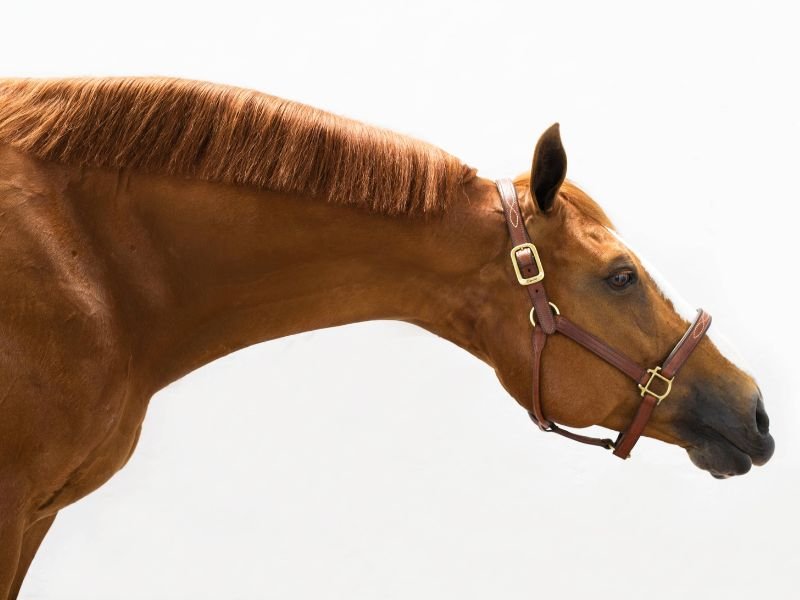
To Cut or Not To Cut: Mane Maintenance
Hey, let’s talk mane care! Regular grooming is a must. You’ll need a couple of brushes: one soft bristle for the base and a mane and tail brush for the length. And don’t forget that equine conditioner! But what if that mane gets too wild to manage?
Well, here’s the deal: cutting isn’t usually the go-to. Why? Because those luxurious manes have a job to do, like pest control and insulation. Plus, cutting can mess with the horse’s natural functions and even cause them some discomfort.
If you have a working horse, like a Cob or a polo pony, you might see their mane “hogged” or cut short. This is practical but not common for most companion horses.
When it comes to style and performance, some riders trim for competitive events or to reduce wind resistance.
The Pros and Cons of Pulling and Cutting
So, if you shouldn’t cut, what’s the alternative? It’s called ‘pulling.’
But hold your horses—don’t go yanking out that mane all at once! Work in small sections, using quick, short pulls. This technique thins out the mane and keeps it tidy.
However, it’s essential to consider the sensitivity of your horse.
Ever noticed how some horses react strongly when their manes or tails are pulled? It’s understandable to wonder if it’s a painful experience for them.
The truth is, mane and tail hair is connected to special nerve endings that can sense touch and discomfort. The nerve endings are more concentrated near the skin and spine. This could mean that pulling tail hair, which is closer to the spine, might be more uncomfortable for horses.
Different parts of the body have varying levels of sensitivity, with some areas feeling more sensitive than others – like the flank area or the dock. You can often gauge your horse’s sensitivity through grooming.
Even though the mane is separated from the spine by neck muscles and the skin is thicker compared to the tailbone area, there are still pain receptors at the ends of each strand of hair. This means that horses can indeed feel some discomfort when their manes are pulled.
If you’re in the ‘no-pulling’ camp, thinning blades are an option. You can use these similar to the pulling technique, but they’re less stressful. The mane does grow back faster this way, though.
Trimming the mane with scissors straight across tends to cause the mane to puff out and can be difficult to achieve a consistent length.
And if you’re into riding, you’ve probably heard of a “bridle path.” It’s a little area you trim to keep your gear from getting tangled. Be cautious here; a jumpy horse could make this risky. Always keep the area safe and the horse calm.
Roaching a Mane: Embracing Change
Speaking of mane care, have you ever considered roaching your horse’s mane? It’s a grooming technique that goes beyond the ordinary.
Roaching can work wonders for your horse’s appearance, highlighting features that a long mane might conceal. This grooming choice can make a weak-necked horse look stronger and accentuate various aspects of their natural charm.
The beauty of roaching lies in its simplicity and effectiveness. It’s virtually maintenance-free and can bring about remarkable transformations.
And here’s the fascinating part: when the mane eventually regrows and falls over, it often comes back even more luxurious. Thicker, shinier, and healthier hair emerges, showcasing the positive impact of this bold grooming decision.
Roaching isn’t just about style – it’s about embracing change and discovering a new side of your horse’s personality.
So, if you’re up for a grooming adventure that can reveal hidden strengths and enhance your horse’s allure, roaching might just be the exciting choice you’re looking for.
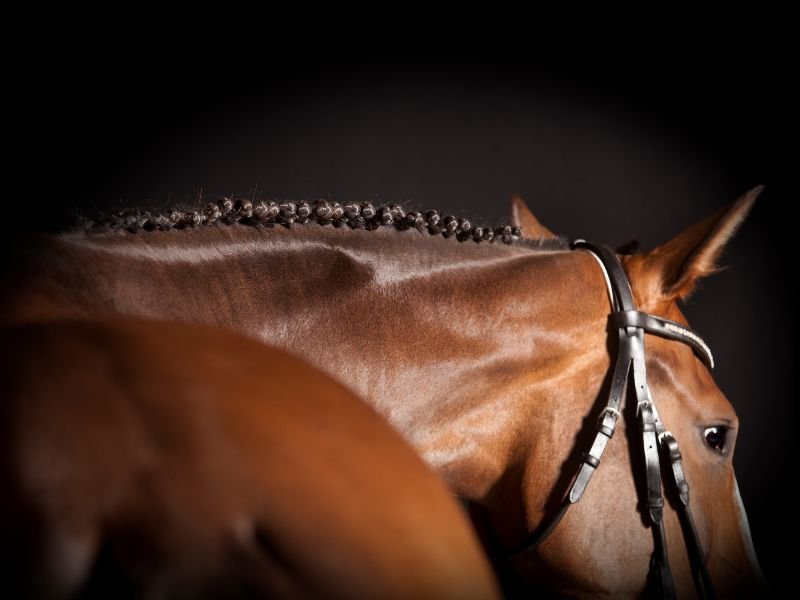
Mane Makeover: The Art of Braiding
Braiding isn’t just a fashion statement; it’s practical too!
Horses with braids aren’t just showing off; they’re keeping their manes clean and out of the way. Think of it as a combo of beauty and utility.
They are common in competitions to keep things tidy and can also be used to train a horses mane to all go to one side.
The Many Styles of Braids
Get this: There are tons of braid styles, each with its own flair and function. Here are some of the cool ones:
- Button Braids: Big, round, and oh-so-elegant. You’ll see these a lot in dressage.
- Hunter Braids: Smaller and plenty of ’em. Great for hunt seat events.
- Running Braid: For those glorious long manes. Keeps it neat while letting it flow.
- Continental & French: Fancy and functional. You’ll see these at high-level events.
So whether it’s keeping a mane clean or giving a horse that extra sparkle in a show, braids are more than just knots—they’re part of a horse’s identity.
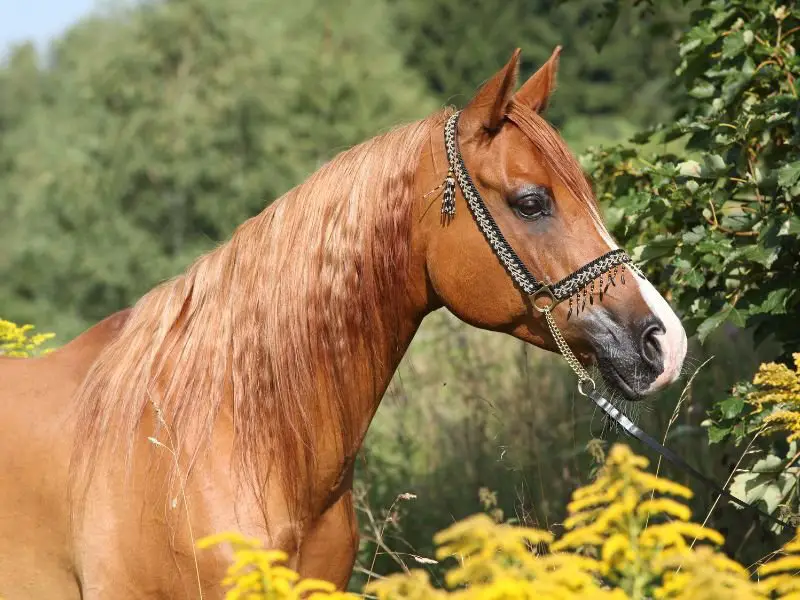
Why Some Horses Lose Their Manes
Sometimes, a horse might lose its mane for a few reasons:
- Bugs and Itching: Small bugs like lice or mites can make horses itch and pull out their hair.
- Irritation from Blankets: When blankets rub against the horse’s skin, it can cause irritation and itching.
- Allergies (Sweet Itch): Horses might react to bites from tiny flies, making them itchy and leading them to rub off their manes.
- Infections: Germs like bacteria or fungi can cause itching and hair loss.
- Lack of Good Food: If a horse doesn’t eat a balanced diet, its mane could be affected.
- Rare Cases: Sometimes, if the soil has too much selenium or due to certain medications, a horse’s mane can be lost.
If you’re worried about your horse losing its mane, it’s a good idea to talk to the vet to try to find the source of the problem and a solution.
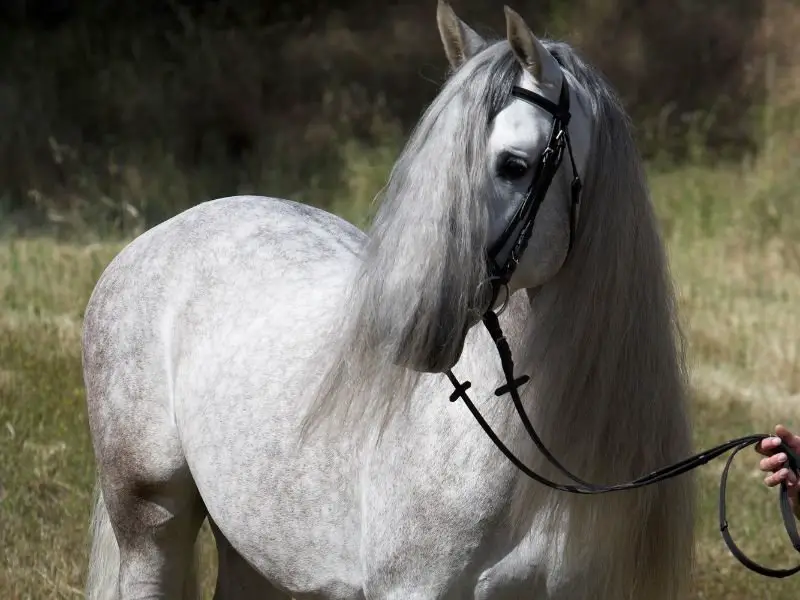
Wrapping Up About The Purpose For Horse Manes
So there you have it, folks! Horse manes are more than just a pretty sight; they’re a blend of form and function.
From protection against weather and bugs to clues about a horse’s breed and competition style, these flowing tresses do a lot.
While the mane’s role has evolved over time due to domestication, its core purposes like warmth and safety still stand strong.
Next time you see a horse, don’t just admire the mane—remember, it’s telling you a story. Whether it’s braided for a special event or flowing free in a field, each mane is a unique blend of beauty and practicality.
Hope you had as much fun learning about horse manes as we did sharing it with you! 🐴
Now that you know a bit more about horses manes, why don’t you learn more.
Cheers, Kacey
P.S. Did you like this article? Gallop over to:

